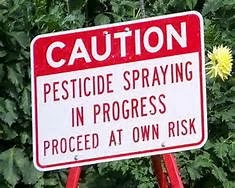suc·cess
noun
- the favorable or prosperous termination of attempts or endeavors; the accomplishment of one's goals.
- the attainment of wealth, position, honors, or the like.
- a performance or achievement that is marked by success, as by the attainment of honor.
- a person or thing that has had success, as measured by attainment of goals, wealth, etc.
growth
noun
- the act or process, or a manner of growing; development; gradual increase.
- size or stage of development: It hasn't yet reached its full growth.
- completed development
- development from a simpler to a more complex stage: the growth of ritual forms.
- development from another but related form or stage: the growth of the nation state.
Historically, I always thought that my happiness was
tied to my success in life. I thought
that by nailing a good job right after college, climbing the corporate ladder,
buying a house, and seeing my 401K balance steadily increase would make me
happy. Sure those things add something
to my life but there’s more to happiness than just success.
Similarly, there’s more to success for businesses than
growth. Can a business truly be considered successful
if it’s making a profit but has miserable employees in unhealthy working
conditions or paying them anything but a living wage? Can it be considered successful by making a
profit while spewing toxins into the environment? A lot of people would say yes – a business
can be successful in these circumstances.
All too often our society marks a business as successful as long as it’s
increasing shareholder value.
Growth in earnings; growth in populations served; and
growth in the number of brick and mortar stores are all viewed as success. If a business has growth, it’s got to be
successful right? At least that’s what a majority of Wall Street thinks. I
fundamentally disagree with this. Business
is about more than just the numbers. It’s also about people and the planet. Business cannot exist without people and the
planet. So why do we tie the importance
of success and growth together? Infinite
resources are not at the disposal of business.
It’s hard to find examples of profit being maximized while the well-being
of employees and decreased reliance on the planet are also being maximized.
Imagine the following scenario –
A corporation releases its quarterly earnings. Profits are down 20% from the prior quarter
but executive management views this as the most successful quarter yet. Carbon emissions are down by 15% just in one
quarter; employee turnover rates have decreased by almost 50% from the prior
year; employee expenses are up 10% due to increases in wages and benefits from
the prior quarter; and all facilities are now zero waste facilities.
In today’s environment the fact that profits are down
from the prior quarter would send Wall Street into a panic. The company’s stock price may plummet and
some shareholders may cash out. Analysts
may signal the company may be losing control over its projections and this
company may prove to be too risky to invest in. Why? Because profit declined and there was no
growth. This is the only thing that MOST
press releases will pick up on. This company
was very successful in several areas but that could be overlooked because of
the decline in profit.
What would it look and feel like if today’s market
focused more on the triple bottom line?
I myself have a hard time imagining such a thing. It’s so ingrained in us that growth equals
success. How can declines in values
equate to success? It takes a fundamental
shift in valuing everything that’s important to us to see beyond the good in
growth.

















